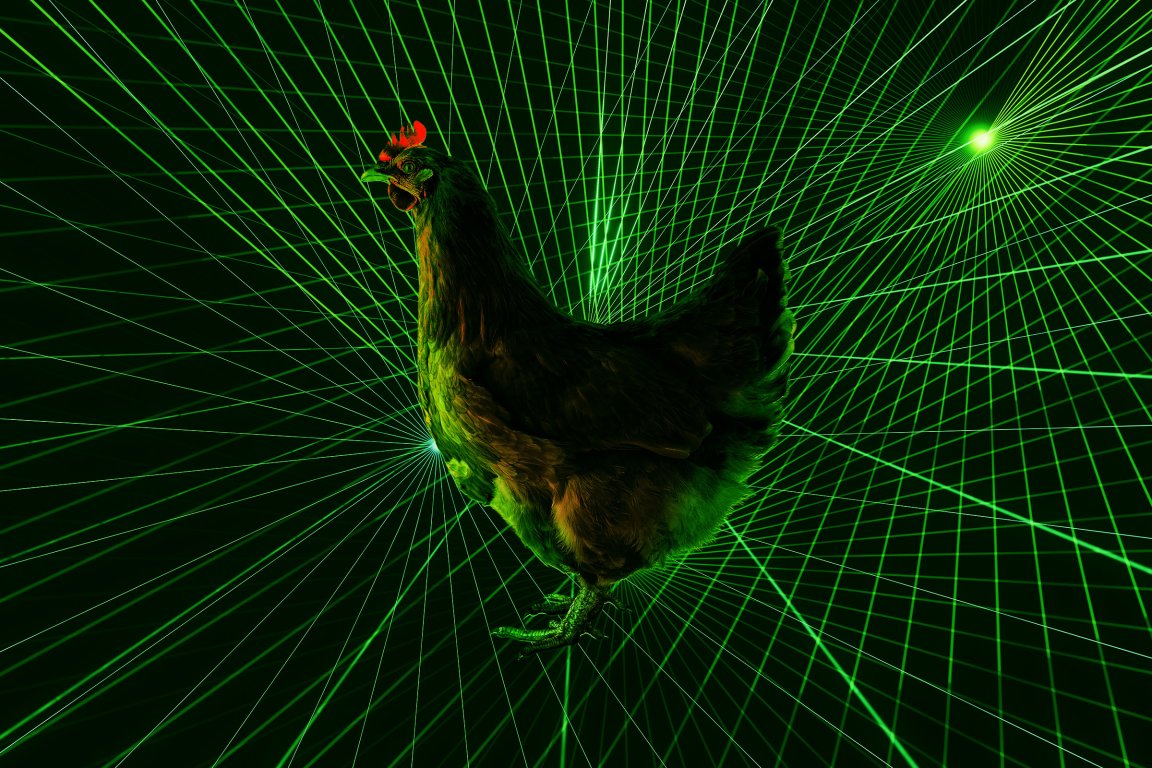
Chicken farming is a fowl business. To make it, you’ll need extensive knowledge in animal husbandry, business finance, biosecurity, and mechanical repair. If one company in Japan has its way, that list could soon include “drone skills” as well.
A Japanese firm called NTT e-Drone Technology Company Ltd has developed a drone-laser system designed to scare wild birds and other unwanted visitors away from chicken coops, as reported by tech blog Tom’s Hardware.
The quadcopter system sports a payload consisting of a laser-grid projector not unlike those chintzy Christmas light shows from 2019. When deployed, the drone automatically navigates toward unwanted nuisance animals before blasting them with a dazzling array of red and green lasers.
A YouTube teaser reel shows the NTT drone gently shooing wild boar, stags, crows, pigeons, and waterfowl away from a desired area.

It’s a scheme proposed by NTT to ward off predator mammals or wild birds which have the potential to infect poultry flocks with bird flu. According to Tom, it was designed in response to a massive bird flu outbreak in Chiba prefecture, the peninsula directly east of Tokyo.
Earlier this year, a bird flu outbreak devastated poultry farms throughout the area, prompting the Japanese government to deploy their version of the national guard to contain the highly pathogenic virus.
In all, some five million chickens had to be euthanized in January alone, a disaster in the island nation’s food supply chain, with Tom noting that 3.3 million of the poultry fatalities were located in Chiba.
If successful at scale, the NTT laser drone could represent a much-needed breakthrough in farm management tech. Current methods to ward off diseased and predatory beasts are primitive, including measures like dangerous chemical deterrents, guard dogs, and netting.
In August, a California trapper was shocked to discover a gaggle of wild boar with deep-blue meat, the result of feasting on an agricultural pest repellant known as diphacinone. Laser drones could go a long way toward keeping these kinds of chemical toxins out of the natural food chain, with minimal impact on wildlife.
While the footage of the laser-drone system is only a proof-of-concept for now, it’s the result of a close collaboration with the prefectural government of Chiba, which is reviewing whether to adopt the drones going forward. If approved, Tom’s reports that local government subsidies will help farmers deploy the quadcopters throughout the prefecture, hopefully to avoid another costly outbreak of bird flu.
More on drones: Amazon Drones Kamikaze Into Construction Equipment, Burst Into Flames